Sony X90K vs TCL 6-Series: Which mid-range TV is best?
These TVs offer many of the same features, but one is better than the other.
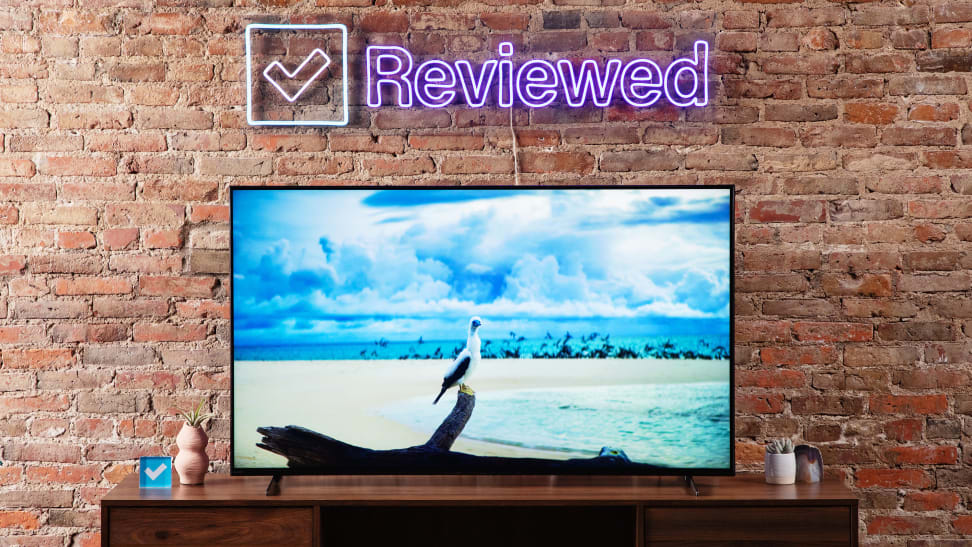 Credit:
Reviewed / Tim Renzi
Credit:
Reviewed / Tim Renzi
Products are chosen independently by our editors. Purchases made through our links may earn us a commission.
The Sony X90K and the TCL 6-Series are two mid-range 4K TVs with plenty of upside. They both deliver similar performance metrics and share many of the same features for gaming, streaming, and beyond, making them great picks for shoppers who want a little more bang for their buck.
Given their similarities, choosing between the two isn’t easy. Fortunately, having extensively tested both models, we’re well positioned to simplify the process. Here’s how the Sony X90K and the TCL 6-Series compare—from price to performance.
Buy the TCL 6-Series at Amazon
Spring cleaning season is here. Sign up for our monthlong cleaning newsletter and we'll get your home sparkling before your first allergy attack.
Price
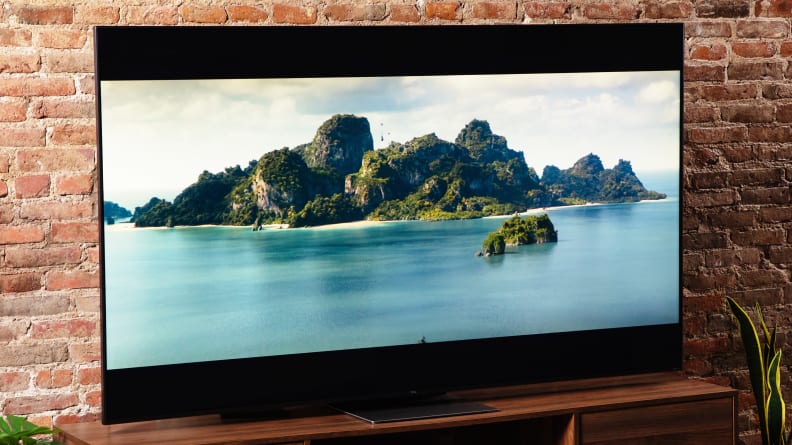
The 6-Series may offer less options and sizes, but they are still much more affordable than the X90K.
Since its release, the Sony X90K has seen significant discounts. For context, I’ll be highlighting both the original listing of each model as well as its current sale price at the time of publishing.
Sony X90K:
- 55-inch (Sony XR-55X90K), MSRP $1,299.99 (on sale for $898 at Amazon)
- 65-inch (Sony XR-65X90K), MSRP $1,499.99 (on sale for $998 at Amazon)
- 75-inch (Sony XR-75X90K), MSRP $1,899.99 (on sale for $1,398 at Amazon)
- 85-inch (Sony XR-85X90K), MSRP $2,799.99 (on sale for $1,998 at Amazon)
TCL 6-Series:
- 55-inch (TCL 55R655), MSRP $699.99 (on sale for $649.99 at Amazon)
- 65-inch (TCL 65R655), MSRP $999.99 (on sale for $949.99 at Amazon)
- 75-inch (TCL 75R655), MSRP $1,599.99 (on sale for $1,499.99 at Amazon)
The 6-Series is available in just three sizes: 55, 65, and 75 inches. They’re on a moderate sale at the time of publishing.
That said, most of the size options in the 6-Series lineup are more affordable than their counterparts in the X90K series. For instance, the marked-down 55-inch X90K is currently about $250 more than the 55-inch 6-Series, and there’s a $50 difference between each 65-inch option. The exception being the 75-inch models, where the Sony X90K is $100 less than the 6-Series.
Our pick: TCL 6-Series
Design
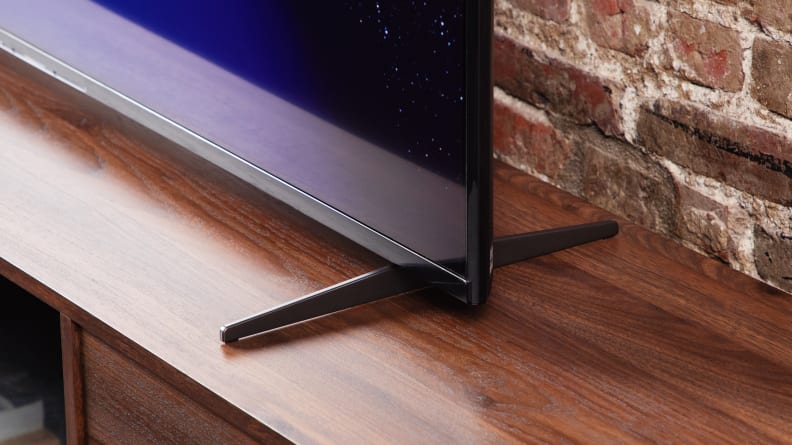
No need for screws or any additional manufacturer pieces to get this TV to stand up straight.
Neither of these TVs feature dazzling, show-stopping designs. Nevertheless, they’re sturdy and visually unobtrusive, so they should blend into whatever room they’re placed in.
We love the X90K’s slim, easy-to-install feet, which lock into place near the panel’s corners—no screwdriver required. Despite the lack of screws, the system is secure enough to keep the panel fixed in place and free of wobble. Even better, the feet can be arranged in two different configurations, one of which leaves just under three inches of room for a soundbar.
The 6-Series isn’t as sleek-looking as the X90K, in part because its chassis juts out around its midsection. Like the X90K in its elevated configuration, the 6-Series’ flat, plate-style stand offers just under three inches of clearance for a soundbar.
Unfortunately, there’s a quarter-inch indentation behind the 6-Series’ display that creates a border around the picture. Due to the materials used, this indentation reflects light, causing the picture to be flanked by a ghostly, flickering border. Most folks aren’t likely to notice this phenomenon unless they’re viewing the TV from an off-axis position, however.
Both TVs feature decent designs, but the X90K is sharper looking and more accommodating, to boot.
Our pick: Sony X90K
Features and smart platform
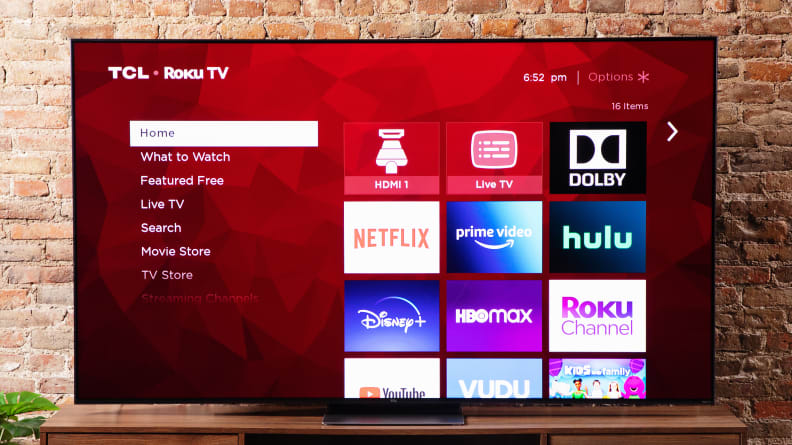
The 6-Series provides a more easily accessible and user-friendly experience all around.
The X90K and the 6-Series deliver a fair amount of hardware- and software-related features for the price, many of which overlap. Before we get into their differences, let’s take a look at the features they share:
- Resolution: 4K (3,840 x 2,160)
- HDR support: Dolby Vision, HDR10, HLG
- Dolby Atmos: Yes
- eARC support: Yes
- Native refresh rate: 120Hz
- Color: DCI-P3 color space/10-bit chroma resolution
- Auto Low Latency Mode (ALLM): Yes
- Variable Refresh Rate (VRR): Yes
- Other features: Google Assistant, Amazon Alexa, Apple AirPlay, Apple HomeKit
Cinephiles and picture purists will be pleased to learn that both the X90K and the 6-Series support Dolby Vision, a popular, proprietary version of HDR whose compatible titles can be found on Blu-ray and streaming platforms (like Netflix and Apple TV). It’s a nice feature for enjoying popular titles in a professionally optimized HDR format.
In the realm of gaming, neither TV is a slouch. In addition to Auto Low Latency Mode and Variable Refresh Rate, they both offer two HDMI 2.1 inputs (out of four) that are capable of 4K gaming at 120Hz.
The 6-Series, however, separates its dedicated eARC input from its pair of gaming inputs. This allows users to plug in two current-gen consoles (like an Xbox Series X and a PlayStation 5) without using up the input reserved for an eARC-enabled soundbar.
On the X90K, the eARC-enabled input also functions as one of the TV’s gaming-optimized inputs. X90K owners who also own an Xbox Series X, a PlayStation 5, and an eARC-enabled soundbar will have one too many devices for the TV’s HDMI suite. They’ll either have to invest in an A/V receiver or relegate one of their consoles to a port that isn’t optimized for gaming. The 6-Series also supports FreeSync Premium Pro, AMD’s proprietary version of VRR.
The X90K comes with the Google TV smart platform baked right into the TV’s software. Despite a hefty amount of sponsored content across the platform, the software is quick, the user interface is easy to pick up, and there are plenty of additional apps available if the preinstalled batch doesn’t quite suit your needs. It would be our favorite smart platform were it not for the existence of Roku.
Being a Roku TV, the 6-Series is one of the most user-friendly TVs in its price bracket. The software is by far the easiest to use—even easier than Google TV. With its big, bold interface and its exhaustive app support, Roku is a fantastic smart platform for both dedicated streamers and casual viewers looking for a straightforward experience. In most cases, there’s only one advertisement on display, and it’s quite easy to avoid while you’re jumping from one app to the next.
Of all the categories we’re covering in this matchup, this is the one where the X90K and the 6-Series are the closest. Still, we find Roku to be a better fit for a wider swath of people than Google TV, and the 6-Series’ thoughtful HDMI 2.1 implementation gives it an edge over the X90K—especially if you own (or plan on owning) multiple current-gen gaming consoles.
Our pick: TCL 6-Series
Performance
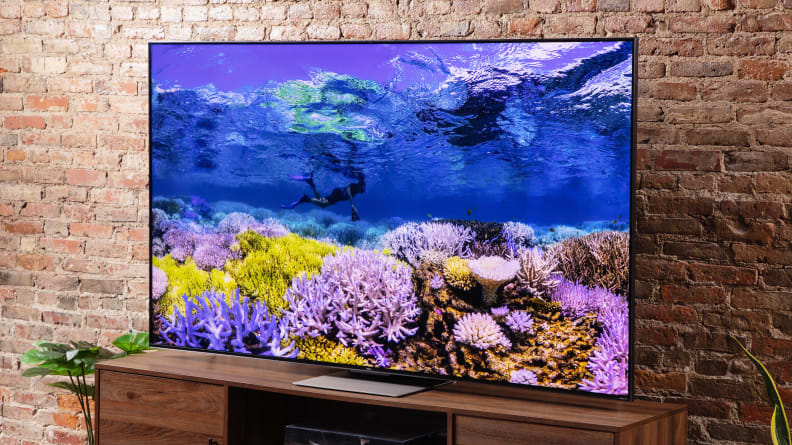
The 6-Series has an impressive full-screen brightness thanks to its quality HDR and it will keep the action clear even in sunny living rooms.
The TCL 6-Series is equipped with mini-LEDs, an impressive display technology typically found in more premium TVs. These miniature LEDs allow for better contrast control than a traditional full-array backlight. The 6-Series’ local dimming is phenomenal, and not just for a TV in its price range. Its black levels are deep (around 0.05 to 0.1 nits, depending on content) and there’s very little light bloom whenever brighter picture elements clash with darkness. That’s the advantage of mini-LEDs in action.
The X90K, on the other hand, is using a traditional full-array LED backlight. It’s not nearly as adept at limiting light bloom as the 6-Series (though its black levels are comparable).
The 6-Series is also impressively bright, making it a fantastic daytime companion. Its average picture brightness is super accommodating—regardless of what you’re watching. Basic SDR content (cable TV, sports, and local news) is plenty bright, while HDR highlights (small areas of intense brightness) climb as high as 1,200 nits. If you’re watching HDR10 or Dolby Vision content, it will really pop—especially in the dark.
The X90K is capable of sizzling brightness, too. It produces highlights in the 800- to 900-nit range—in HDR and SDR. And, while the X90K’s average picture brightness is slightly dimmer than that of the 6-Series, it, too, is a dependable daytime TV.
Both TVs sport quantum dots, which bolster its colors across the board. According to our lab tests, both the 6-Series and the X90K are capable of covering about 92% of the HDR color space (DCI-P3). In real-world terms, you can expect both TVs to deliver bright, bold hues with accurate out-of-the-box color points.
Speaking of calibration, if you’re the type of person who loves to tinker with A/V-related settings, the X90K is way more flexible than the 6-Series. Sony’s toolbox of settings is among the most exhaustive in the industry, while there aren’t many ways to tweak the 6-Series’ picture without downloading a mobile app and linking your device to the TV. Just something to keep in mind if you’re hoping to get your hands dirty.
The 6-Series’ mini-LED backlight is the difference maker. While both TVs offer comparable brightness, black levels, and color production, the 6-Series is much more adept at controlling its contrast throughout different types of content. There’s very little light bloom on the 6-Series, while bright-on-dark picture elements are liable to carry light bloom when viewed on the X90K.
Our pick: TCL 6-Series
And the winner is…
The TCL 6-Series is not only the more affordable option of the two, it’s also a better performer with a cleaner, friendlier smart platform. Movie buffs and casual streamers alike will appreciate the 6-Series’ superior picture quality, and dedicated gamers are sure to value the 6-Series’ thoughtful HDMI 2.1 implementation.
If you’re in the market for an 85-inch TV (or if you’d rather have the flexibility of more audio- and picture-related calibration settings), the X90K is worth considering. For most people, however, the 6-Series fits the bill.
Buy the TCL 6-Series at Amazon
The product experts at Reviewed have all your shopping needs covered. Follow Reviewed on Facebook, Twitter, Instagram, TikTok, or Flipboard for the latest deals, product reviews, and more.
Prices were accurate at the time this article was published but may change over time.


